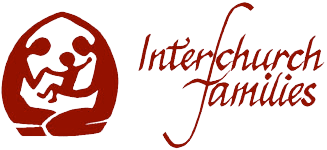555-555-5555
mymail@mailservice.com
A New Era for Interchurch Families in Australia
This article was published as part of the proceedings of the international conference held in Newcastle, NSW, Australia in 2005
The 11th International Conference of Interchurch Families held in Newcastle during August marks a turning point for the network of interchurch family groups in Australia, many of whom had not met together before.
Interchurch families are formed when Christians marry across denominational boundaries – often to a Roman Catholic. Historically, these “mixed marriages” have been seen by the churches as a problem, yet the couples attending the conference were described as a prophetic sign and instrument of God’s call for wholeness and unity in the Body of Christ for the world. Interchurch families, who experience daily the pain and tension of the divisions in the Church, are pioneers, already living out the unity that Jesus prayed for and to which we are called.
Conference delegates represented four States as well as Canada, New Zealand and the UK. The significance of interchurch families to the Church was reflected by the support of many church leaders: the Catholic Bishop of Maitland-Newcastle, Michael Malone and the Anglican Assistant Bishop of Newcastle, Graeme Rutherford attended for most of the conference, which was also attended by Bishop Brian Farran (now Bishop of Newcastle) and the retired Catholic Cardinal Cassidy, along with prominent representatives of the Lutheran, Presbyterian and Uniting Churches. Several couples and diocesan delegates were sponsored by their local bishop.
Some 50-70% of marriages involve spouses from different churches. Of those that are actively involved in the church when first married, many become single church families or stop attending at all, especially if they do not feel welcome in each other’s church. Ideally, all families should obtain pastoral care appropriate to their particular circumstances. It is helpful for interchurch families to receive joint pastoral care from both churches.
Faith was compared with weight lifting. We need to keep muscles in tension to help develop them. Likewise, we need to hold faith issues in tension so that faith may be fully developed and passed onto the next generation. For some interchurch couples, the difficulties and pain are too great, and they stop talking about faith. Often, however, interchurch families do build these “faith-muscles” and are found heavily involved in both parishes and actively pass on and develop faith in their children. These families reflect the concept of being “domestic church”, sharing in common the sacraments of baptism and marriage, which are recognised in both churches. Their children often experience “double-belonging”, feeling at home in both churches. Some of these children want double belonging to be reflected in jointly conferred confirmation – another way in which interchurch families prophetically point towards Christian unity.
For interchurch families, one of the key issues is being able to receive Eucharist together, particularly when one spouse is a Catholic (similar issues arise when a spouse is Lutheran). The 1983 Code of Canon Law opened the way for a baptised non-Catholic spouse to receive communion. The 1993 Ecumenical Directory identified those who “share the sacraments of baptism and marriage” as in possible need of Eucharistic sharing, at their wedding and more generally. These provisions, however, need to be promulgated in each Catholic diocese. To date, only four dioceses in Australia have done so, and it is not expected that similar directions will be developed in other dioceses. Brisbane Diocese’s Guidelines, “Blessed and Broken”, were recognised as the clearest and most useful. While general Eucharistic sharing among all Christians is not yet permitted, for interchurch couples, it is recognised that they “could well experience a serious spiritual need to receive” every time they attended Mass with their family. The Maitland-Newcastle Diocese’s instructions were that there should be no universal general invitation, but also no universal general prohibition. These guidelines were received positively by conference participants.
Another outcome of the conference was the resolve by the Australian participants to strengthen the bonds between the different state groups, possibly by holding a regular Australian conference, starting in Victoria in October 2006.
More information about interchurch families, and contacts around the world can be found on the Internet at www.interchurchfamilies.org. This website accesses many documents and resources for Interchurch families, including copies of papers presented at the conference
David and Susan White
Perth WA
Contact Us
3rd Floor,
20 King Street,
London,
EC2V 8EG.
Contact Us
Telephone: +44 (0)20 3384 2947
Email: info@interchurchfamilies.org.uk
Registered Charity No. 283811

